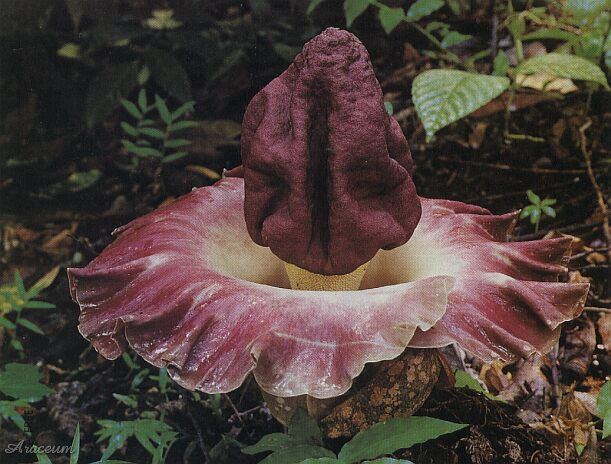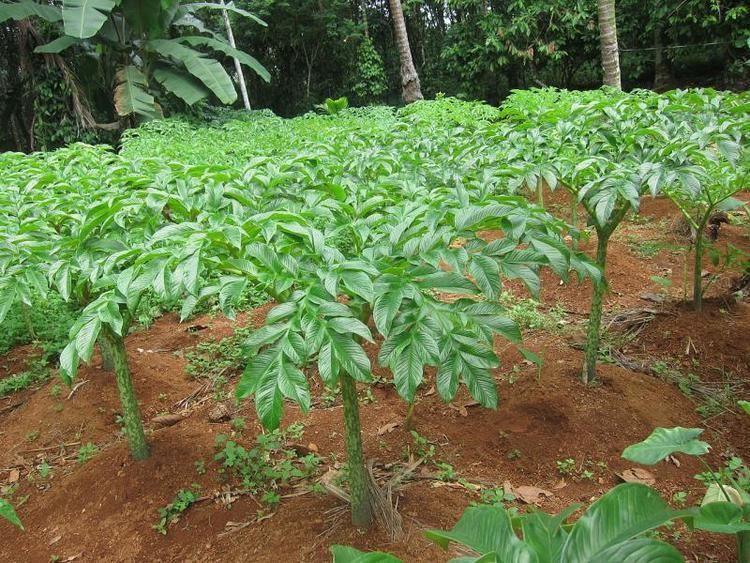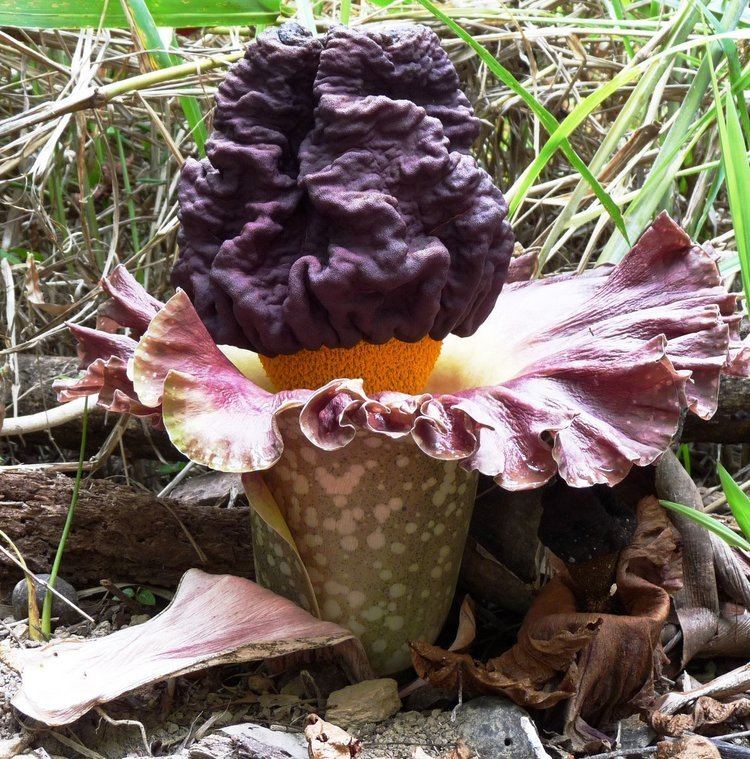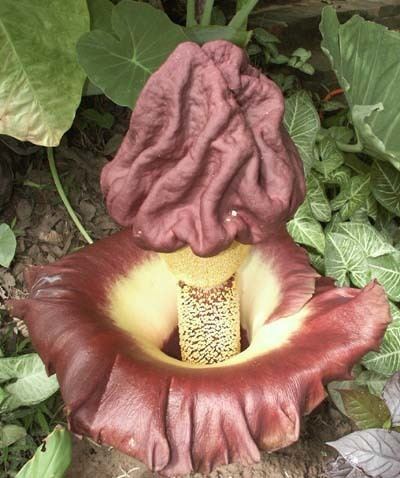Rank Species | Higher classification Zaminkand | |
 | ||
Scientific name Amorphophallus paeoniifolius Similar Water, Taro, Yam, Purple yam, Konjac | ||
Elephant foot yam plants amorphophallus paeoniifolius
Amorphophallus paeoniifolius, the elephant foot yam or whitespot giant arum or stink lily, is a tropical tuber crop grown primarily in Africa, South Asia, Southeast Asia and the tropical Pacific islands. Because of its production potential and popularity as a vegetable in various cuisines, it can be raised as a cash crop.
Contents
- Elephant foot yam plants amorphophallus paeoniifolius
- Revoking amorphophallus paeoniifolius elephant foot yam sprout
- Description
- As food
- As medicine
- References

Revoking amorphophallus paeoniifolius elephant foot yam sprout
Description

The plant gives off a putrid smell. The pistillate (female) and staminate (male) flowers are on the same plant and are crowded in cylindrical masses. The berries are red when ripe and are not quite round, being subglobose or ovoid.
As food

Elephant foot yam is of Southeast Asian origin. It grows in its wild form in India, Sri Lanka, the Philippines, Malaysia, Indonesia, and other Southeast Asian countries.

In India this species as a crop is grown mostly in Bihar, West Bengal, Kerala, Karnataka, Andhra Pradesh, Maharashtra and Orissa. It is popularly known as "oal" (ol (ওল) in Bengali, suran or jimikand in Marathi and Hindi, Chenai kizhangu in Tamil, suvarna gedde (ಸುವರ್ಣ ಗೆಡ್ಡೆ) in Kannada, chena (ചേന) in Malayalam, oluo in Oriya, kanda gadda in Telugu and kaene in Tulu).

In Bihar it is used in oal curry, oal bharta or chokha, pickles and chutney. Oal chutney is also called "barabar chutney" as it has mango, ginger and oal in equal quantities, hence the name barabar (meaning "in equal amount").
In West Bengal, these yams are eaten fried or in yam curry. The plant body of elephant foot yam is also eaten in West Bengal as a green vegetable called Bengali: ওল শাক "ol shaak".
In Cambodia, it is known as toal thom (ទាល់ធំ).
In Tonga, where it is known as teve, it is viewed as the most inferior of all yam species, and is only eaten if nothing else is available.
As medicine
The elephant-foot yam is widely used in Indian medicine and is recommended as a remedy in all three of the major Indian medicinal systems: Ayurveda, Siddha and Unani. The corm is prescribed for bronchitis, asthma, abdominal pain, emesis, dysentery, enlargement of spleen, piles, elephantiasis, diseases due to vitiated blood, and rheumatic swellings. Pharmacological studies have shown a variety of effects, specifically antiprotease activity, analgesic activity, and cytotoxic activity. In addition it has been found to be a potentiator for further reducing bacteria activity when used with antibiotics.
Along with other therapeutic applications, the Ayurvedic Pharmacopoeia of India indicates the use of corm in prostatic hyperplasia. The corm contains an active diastatic enzyme amylase, betulinic acid, tricontane, lupeol, stigmasterol, betasitosterol and its palmitate and glucose, galactose, rhamnose and xylose.
